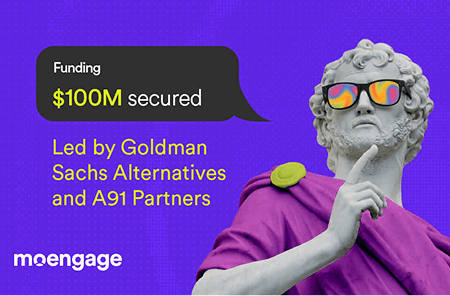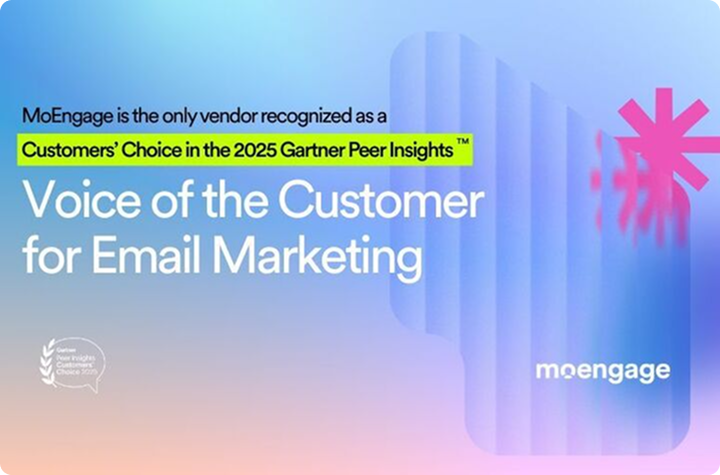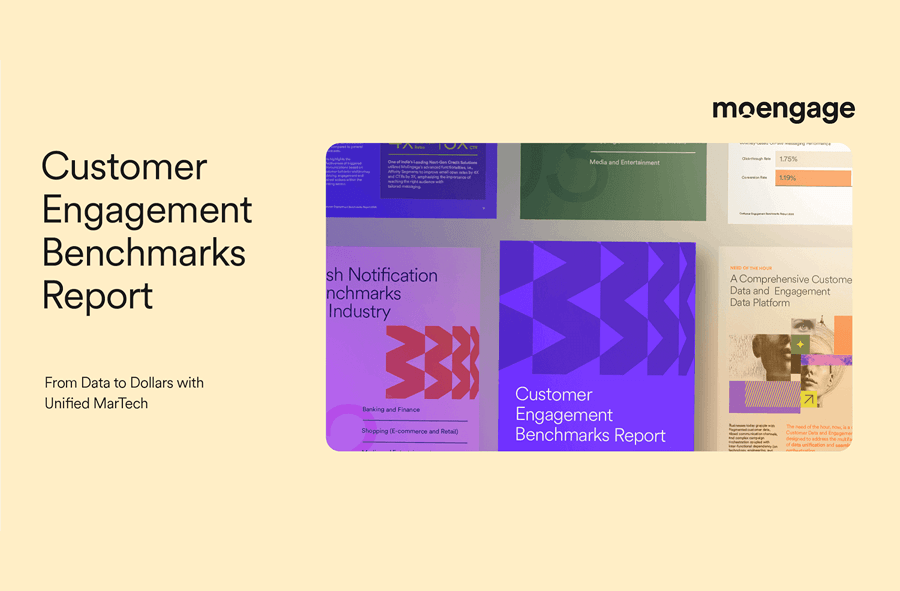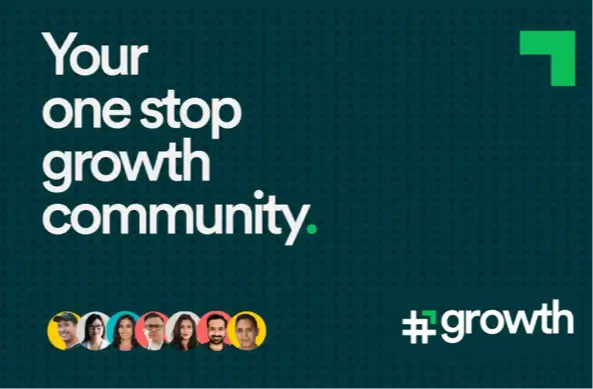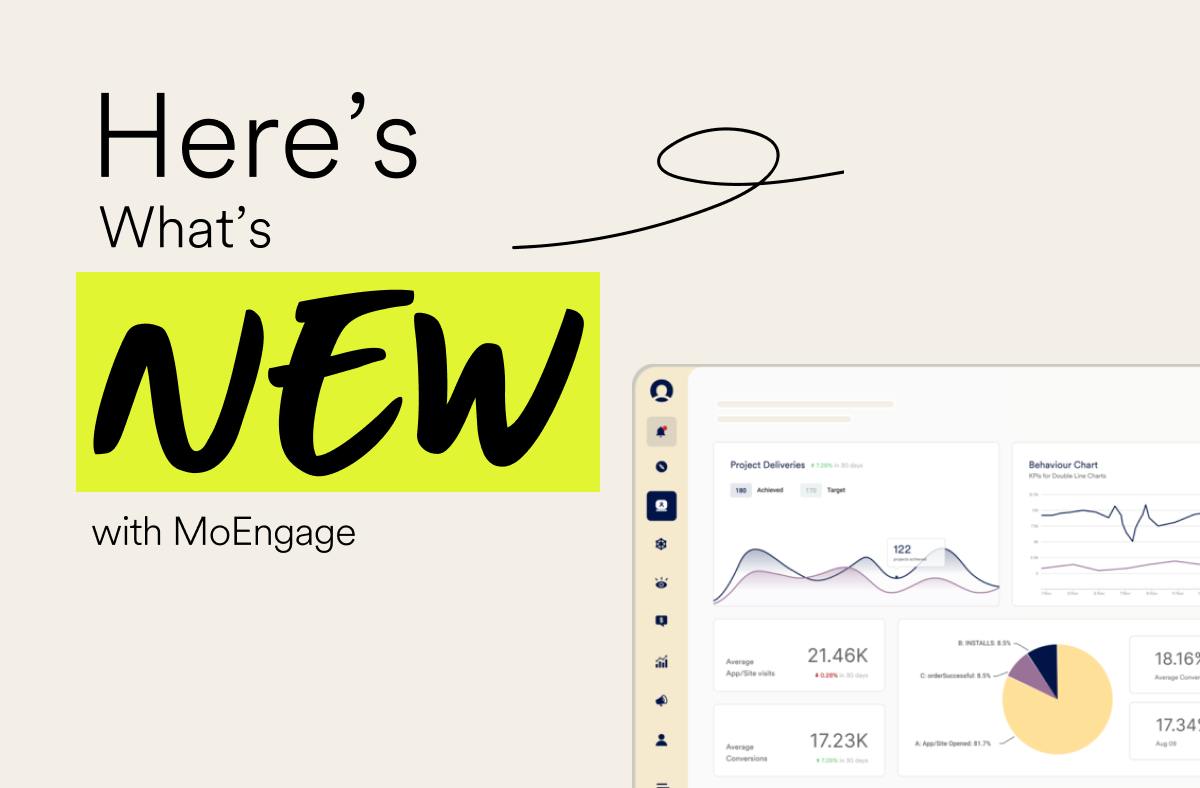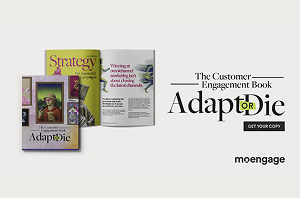Mirela Cialai Q&A: Customer Engagement Book Interview

Reading Time: 9 minutes
In the ever-evolving landscape of customer engagement, staying ahead of the curve is not just advantageous, it’s essential.
That’s why, for Chapter 7 of “The Customer Engagement Book: Adapt or Die,” we sat down with Mirela Cialai, a seasoned expert in CRM and Martech strategies at brands like Equinox. Mirela brings a wealth of knowledge in aligning technology roadmaps with business goals, shifting organizational focuses from acquisition to retention, and leveraging hyper-personalization to drive customer engagement.
In this interview, Mirela dives deep into building robust customer engagement technology roadmaps. She unveils the “PAPER” framework—Plan, Audit, Prioritize, Execute, Refine—a simple yet effective strategy for marketers.
You’ll gain insights into identifying gaps in your Martech stack, ensuring data accuracy, and prioritizing initiatives that deliver the greatest impact and ROI.
Whether you’re navigating data silos, striving for cross-functional alignment, or aiming for seamless tech integration, Mirela’s expertise provides practical solutions and actionable takeaways.
Mirela Cialai Q&A Interview
1. How do you define the vision for a customer engagement platform roadmap in alignment with the broader business goals? Can you share any examples of successful visions from your experience?
Defining the vision for the roadmap in alignment with the broader business goals involves creating a strategic framework that connects the team’s objectives with the organization’s overarching mission or primary objectives.
This could be revenue growth, customer retention, market expansion, or operational efficiency.
We then break down these goals into actionable areas where the team can contribute, such as improving engagement, increasing lifetime value, or driving acquisition.
We articulate how the team will support business goals by defining the KPIs that link CRM outcomes — the team’s outcomes — to business goals.
In a previous role, the CRM team I was leading faced significant challenges due to the lack of attribution capabilities and a reliance on surface-level customer engagement metrics such as open rates and click-through rates to measure performance.
This approach made it difficult to quantify the impact of our efforts on broader business objectives such as revenue growth.
Recognizing this gap, I worked on defining a vision for the CRM team to address these shortcomings.
Our vision was to drive measurable growth through enhanced data accuracy and improved attribution capabilities, which allowed us to deliver targeted, data-driven, and personalized customer experiences.
To bring this vision to life, I developed a roadmap that focused on first improving data accuracy, building our attribution capabilities, and delivering personalization at scale.
By aligning the vision with these strategic priorities, we were able to demonstrate the tangible impact of our efforts on the key business goals.
2. What steps did you take to ensure data accuracy?
The data team was very diligent in ensuring that our data warehouse had accurate data.
So taking that as the source of truth, we started cleaning the data in all the other platforms that were integrated with our data warehouse — our CRM platform, our attribution analytics platform, etc.
That’s where we started, looking at all the different integrations and ensuring that the data flows were correct and that we had all the right flows in place. And also validating and cleaning our email database — that helped, having more accurate data.
3. How do you recommend shifting organizational focus from acquisition to retention within a customer engagement strategy?
Shifting an organization’s focus from acquisition to retention requires a cultural and strategic shift, emphasizing the immense value that existing customers bring to long-term growth and profitability.
I would start by quantifying the value of customer retention, showcasing how retaining customers is significantly more cost-effective than acquiring new ones. Research consistently shows that increasing retention rates by just 5% can boost profits by at least 25 to 95%.
This data helps make a compelling case to stakeholders about the importance of prioritizing retention.
Next, I would link retention to core business goals by demonstrating how enhancing customer lifetime value and loyalty can directly drive revenue growth.
This involves shifting the organization’s focus to retention-specific metrics such as churn rate, repeat purchase rate, and customer LTV. These metrics provide actionable insights into customer behaviors and highlight the financial impact of retention initiatives, ensuring alignment with the broader company objectives.
By framing retention as a driver of sustainable growth, the organization can see it not as a competing priority, but as a complementary strategy to acquisition, ultimately leading to a more balanced and effective customer engagement strategy.
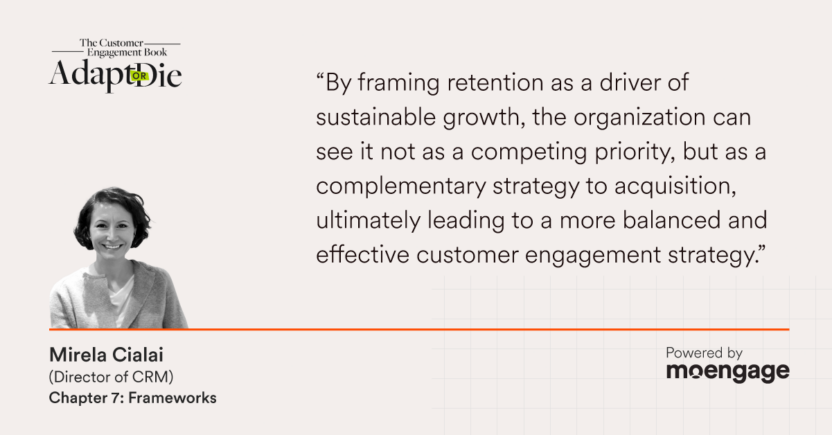
4. What are the key steps in analyzing a brand’s current Martech stack capabilities to identify gaps and opportunities for improvement?
Developing a clear understanding of the Martech stack’s current state and ensuring it aligns with a brand’s strategic needs and future goals requires a structured and strategic approach.
The process begins with defining what success looks like in terms of technology capabilities such as scalability, integration, automation, and data accessibility, and linking these capabilities directly to the brand’s broader business objectives.
I start by doing an inventory of all tools currently in use, including their purpose, owner, and key functionalities, assessing if these tools are being used to their full potential or if there are features that remain unused, and reviewing how well tools integrate with one another and with our core systems, the data warehouse.
Also, comparing the capabilities of each tool and results against industry standards and competitor practices and looking for missing functionalities such as personalization, omnichannel orchestration, or advanced analytics, and identifying overlapping tools that could be consolidated to save costs and streamline workflows.
Finally, review the costs of the current tools against their impact on business outcomes and identify technologies that could reduce costs, increase efficiency, or deliver higher ROI through enhanced capabilities.
Establish a regular review cycle for the Martech stack to ensure it evolves alongside the business and the technological landscape.
5. How do you evaluate whether a company’s tech stack can support innovative customer-focused campaigns, and what red flags should marketers look out for?
I recommend taking a structured approach and first ensure there is seamless integration across all tools to support a unified customer view and data sharing across the different channels.
Determine if the stack can handle increasing data volumes, larger audiences, and additional channels as the campaigns grow, and check if it supports dynamic content, behavior-based triggers, and advanced segmentation and can process and act on data in real time through emerging technologies like AI/ML predictive analytics to enable marketers to launch responsive and timely campaigns.
Most importantly, we need to ensure that the stack offers robust reporting tools that provide actionable insights, allowing teams to track performance and optimize campaigns.
Some of the red flags are: data silos where customer data is fragmented across platforms and not easily accessible or integrated, inability to process or respond to customer behavior in real time, a reliance on manual intervention for tasks like segmentation, data extraction, campaign deployment, and poor scalability.
If the stack struggles with growing data volumes or expanding to new channels, it won’t support the company’s evolving needs.
6. What role do hyper-personalization and timely communication play in a successful customer engagement strategy? How do you ensure they’re built into the technology roadmap?
Hyper-personalization and timely communication are essential components of a successful customer engagement strategy because they create meaningful, relevant, and impactful experiences that deepen the relationship with customers, enhance loyalty, and drive business outcomes.
Hyper-personalization leverages data to deliver tailored content that resonates with each individual based on their preferences, behavior, or past interactions, and timely communication ensures these personalized interactions occur at the most relevant moments, which ultimately increases their impact.
Customers are more likely to engage with messages that feel relevant and align with their needs, and real-time triggers such as cart abandonment or post-purchase upsells capitalize on moments when customers are most likely to convert.
By embedding these capabilities into the roadmap through data integration, AI-driven insights, automation, and continuous optimization, we can deliver impactful, relevant, and timely experiences that foster deeper customer relationships and drive long-term success.
7. What’s your approach to breaking down the customer engagement technology roadmap into manageable phases? How do you prioritize the initiatives?
To create a manageable roadmap, we need to divide it into distinct phases, starting with building the foundation by addressing data cleanup, system integrations, and establishing metrics, which lays the groundwork for success.
Next, we can focus on early wins and quick impact by launching behavior-based campaigns, automating workflows, and improving personalization to drive immediate value.
Then we can move to optimization and expansion, incorporating predictive analytics, cross-channel orchestration, and refined attribution models to enhance our capabilities.
Finally, prioritize innovation and scalability, leveraging AI/ML for hyper-personalization, scaling campaigns to new markets, and ensuring the system is equipped for future growth.
By starting with foundational projects, delivering quick wins, and building towards scalable innovation, we can drive measurable outcomes while maintaining our agility to adapt to evolving needs.
In terms of prioritizing initiatives effectively, I would focus on projects that deliver the greatest impact on business goals, on customer experience and ROI, while we consider feasibility, urgency, and resource availability.
In the past, I’ve used frameworks like Impact Effort Matrix to identify the high-impact, low-effort initiatives and ensure that the most critical projects are addressed first.
8. How do you ensure cross-functional alignment around this roadmap? What processes have worked best for you?
Ensuring cross-functional alignment requires clear communication, collaborative planning, and shared accountability.
We need to establish a shared understanding of the roadmap’s purpose and how it ties to the company’s overall goals by clearly articulating the “why” behind the roadmap and how each team can contribute to its success.
To foster buy-in and ensure the roadmap reflects diverse perspectives and needs, we need to involve all stakeholders early on during the roadmap development and clearly outline each team’s role in executing the roadmap to ensure accountability across the different teams.
To keep teams informed and aligned, we use meetings such as roadmap kickoff sessions and regular check-ins to share updates, address challenges collaboratively, and celebrate milestones together.
9. If you were to outline a simple framework for marketers to follow when building a customer engagement technology roadmap, what would it look like?
A simple framework for marketers to follow when building the roadmap can be summarized in five clear steps: Plan, Audit, Prioritize, Execute, and Refine.
In one word: PAPER. Here’s how it breaks down.
- Plan: We lay the groundwork for the roadmap by defining the CRM strategy and aligning it with the business goals.
- Audit: We evaluate the current state of our CRM capabilities. We conduct a comprehensive assessment of our tools, our data, the processes, and team workflows to identify any potential gaps.
- Prioritize: initiatives based on impact, feasibility, and ROI potential.
- Execute: by implementing the roadmap in manageable phases.
- Refine: by continuously improving CRM performance and refining the roadmap.
So the PAPER framework — Plan, Audit, Prioritize, Execute, and Refine — provides a structured, iterative approach allowing marketers to create a scalable and impactful customer engagement strategy.
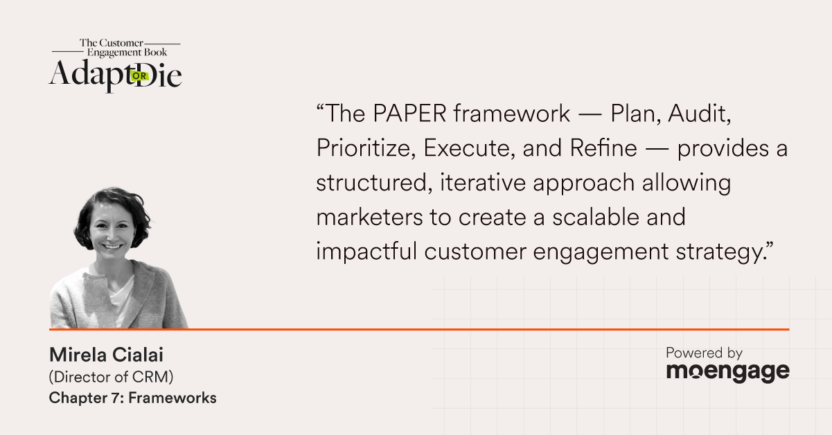
10. What are the most common challenges marketers face in creating or executing a customer engagement strategy, and how can they address these effectively?
The most critical is when the customer data is siloed across different tools and platforms, making it very difficult to get a unified view of the customer. This limits the ability to deliver personalized and consistent experiences.
The solution is to invest in tools that can centralize data from all touchpoints and ensure seamless integration between different platforms to create a single source of truth.
Another challenge is the lack of clear metrics and ROI measurement and the inability to connect engagement efforts to tangible business outcomes, making it very hard to justify investment or optimize strategies.
The solution for that is to define clear KPIs at the outset and use attribution models to link customer interactions to revenue and other key outcomes.
Overcoming internal silos is another challenge where there is misalignment between teams, which can lead to inconsistent messaging and delayed execution.
A solution to this is to foster cross-functional collaboration through shared goals, regular communication, and joint planning sessions.
Besides these, other challenges marketers can face are delivering personalization at scale, keeping up with changing customer expectations, resource and budget constraints, resistance to change, and others.
While creating and executing a customer engagement strategy can be challenging, these obstacles can be addressed through strategic planning, leveraging the right tools, fostering collaboration, and staying adaptable to customer needs and industry trends.
By tackling these challenges proactively, marketers can deliver impactful customer-centric strategies that drive long-term success.
11. What are the top takeaways or lessons that you’ve learned from building customer engagement technology roadmaps that others should keep in mind?
I would say one of the most important takeaways is to ensure that the roadmap directly supports the company’s broader objectives.
Whether the focus is on retention, customer lifetime value, or revenue growth, the roadmap must bridge the gap between high-level business goals and actionable initiatives.
Another important lesson: The roadmap is only as effective as the data and systems it’s built upon.
I’ve learned the importance of prioritizing foundational elements like data cleanup, integrations, and governance before tackling advanced initiatives like personalization or predictive analytics. Skipping this step can lead to inefficiencies or missed opportunities later on.
A Customer Engagement Roadmap is a strategic tool that evolves alongside the business and its customers.
So by aligning with business goals, building a solid foundation, focusing on impact, fostering collaboration, and remaining adaptable, you can create a roadmap that delivers measurable results and meaningful customer experiences.
This interview Q&A was hosted with Mirela Cialai, Director of CRM & MarTech at Equinox, for Chapter 7 of The Customer Engagement Book: Adapt or Die.
Download the PDF or request a physical copy of the book here.

